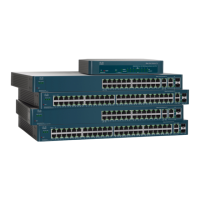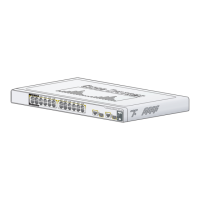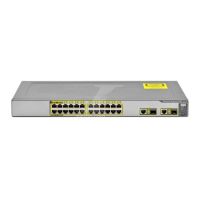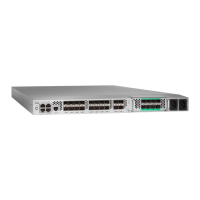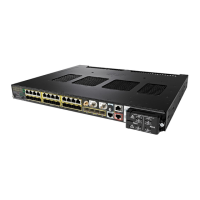Quality of Service
QoS Advanced Mode
Cisco 500 Series Stackable Managed Switch Administration Guide 618
28
• Per flow QoS are applied to flows by binding the policies to the desired
ports. A policy and its class maps can be bound to one or more ports, but
each port is bound with at most one policy.
Notes:
• Single policer and aggregation policer are available when the device is in
Layer 2 mode.
• An ACL can be configured to one or more class maps regardless of policies.
• A class map can belong to only one policy.
• When a class map using single policer is bound to multiple ports, each port
has its own instance of single policer; each applying the QoS on the class
map (flow) at a port independent of each other.
• An aggregate policer applies the QoS to all its flow(s) in aggregation
regardless of policies and ports.
Advanced QoS settings consist of three parts:
• Definitions of the rules to match. All frames matching a single group of rules
are considered to be a flow.
• Definition of the actions to be applied to frames in each flow that match the
rules.
• Binding the combinations of rules and action to one or more interfaces.
Workflow to Configure Advanced QoS Mode
To configure Advanced QoS mode, perform the following:
1. Select Advanced mode for the system by using the QoS Properties page
.
Select the Trust Mode using the Global Settings page. If a packet CoS level and
DSCP tag are mapped to separate queues, the Trust mode determines the
queue to which the packet is assigned:
• If internal DSCP values are different from those used on incoming packets,
map the external values to internal values by using the Out-of-Profile DSCP
Mapping page. This in turn opens the DSCP Remarking page.
2. Create ACLs, as described in Create ACL Workflow.
3. If ACLs were defined, create class maps and associate the ACLs with them by
using the Class Mapping page.
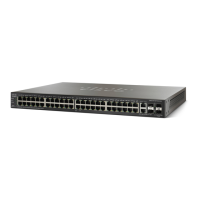
